Introduction to DeepSeek R1: The New AI King in Medical Reasoning
The field of artificial intelligence (AI) has witnessed significant advancements in recent years, and one of the most promising developments is the emergence of DeepSeek R1, an AI model that has been making waves in the medical community. According to Dr. Udara, a consultant Emergency Physician and CEO of HeHealth, DeepSeek R1 has shown exceptional performance in medical reasoning, outperforming even the most skilled junior residents. In this article, we will delve into the capabilities of DeepSeek R1, its potential applications, and what sets it apart from other AI models like OpenAI O1.
The Capabilities of DeepSeek R1
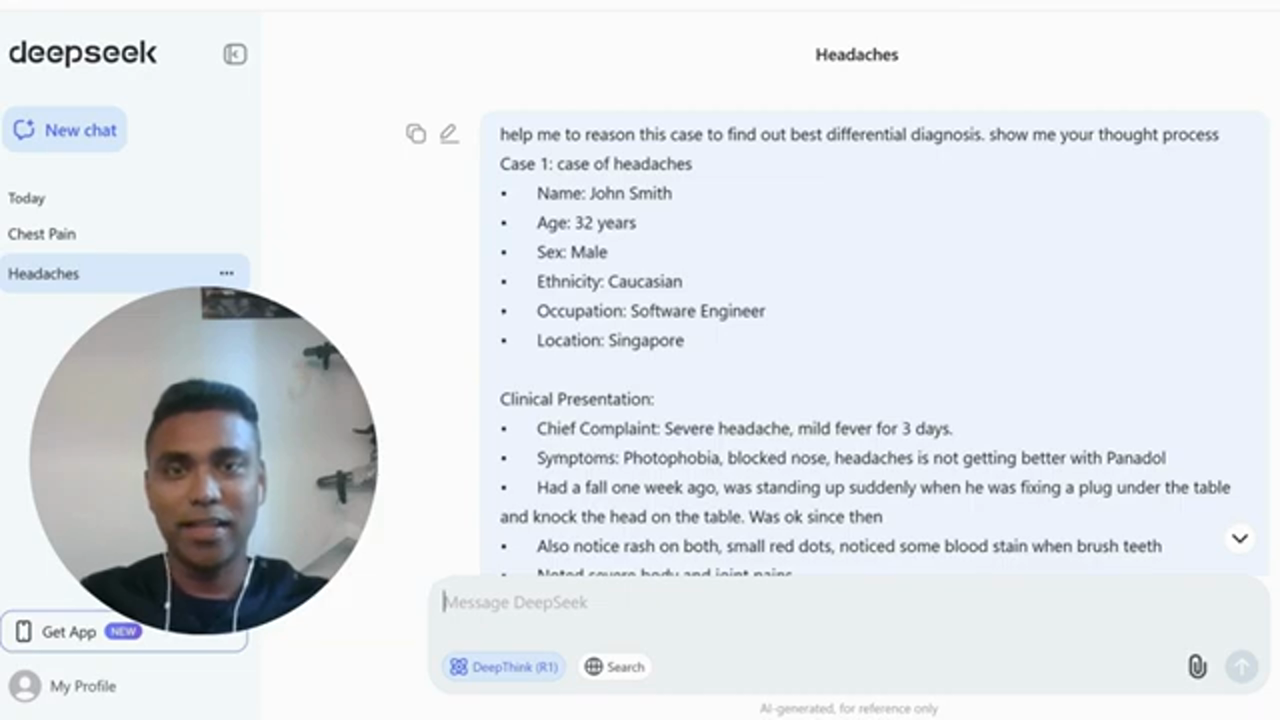 Introduction to DeepSeek R1, the new AI king in medical reasoning
DeepSeek R1 has been designed to mimic the thinking process of a human doctor, taking into account various symptoms, test results, and medical history to arrive at a diagnosis. Dr. Udara has tested the model on actual patient cases, and the results have been impressive. The model's ability to analyze complex medical data, identify patterns, and provide accurate diagnoses has been praised by medical professionals.
Introduction to DeepSeek R1, the new AI king in medical reasoning
DeepSeek R1 has been designed to mimic the thinking process of a human doctor, taking into account various symptoms, test results, and medical history to arrive at a diagnosis. Dr. Udara has tested the model on actual patient cases, and the results have been impressive. The model's ability to analyze complex medical data, identify patterns, and provide accurate diagnoses has been praised by medical professionals.
Case 1: A 32-Year-Old Male with Severe Headache and Fever
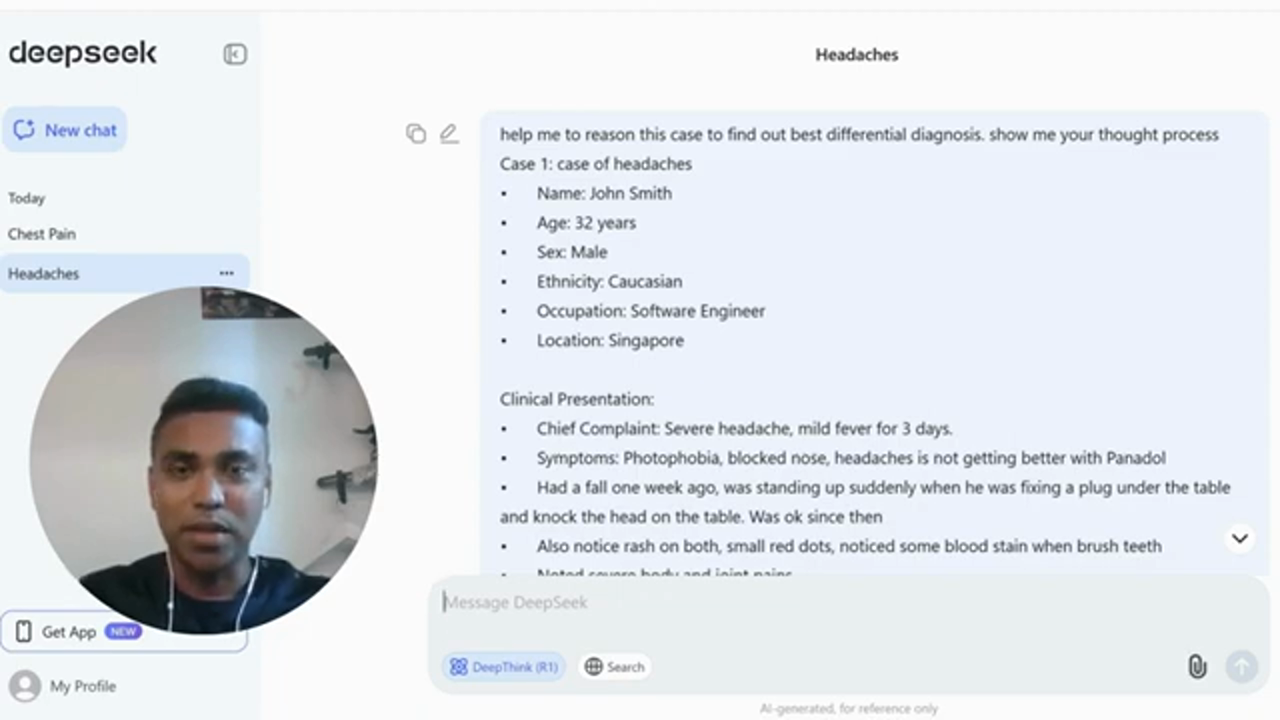 Case 1: A 32-year-old male with severe headache and fever
The first case presented by Dr. Udara involves a 32-year-old male who had been experiencing severe headaches, fever, and photophobia for three days. The patient had also noticed a rash on his hands and body aches. DeepSeek R1 was tasked with analyzing the patient's symptoms and medical history to arrive at a diagnosis. The model carefully considered various differentials, including bacterial meningitis, viral hemorrhagic fever, and leptospirosis. After weighing the pros and cons of each possibility, the model concluded that bacterial meningitis was the most likely diagnosis.
Case 1: A 32-year-old male with severe headache and fever
The first case presented by Dr. Udara involves a 32-year-old male who had been experiencing severe headaches, fever, and photophobia for three days. The patient had also noticed a rash on his hands and body aches. DeepSeek R1 was tasked with analyzing the patient's symptoms and medical history to arrive at a diagnosis. The model carefully considered various differentials, including bacterial meningitis, viral hemorrhagic fever, and leptospirosis. After weighing the pros and cons of each possibility, the model concluded that bacterial meningitis was the most likely diagnosis.
The Rationale Behind DeepSeek R1's Diagnosis
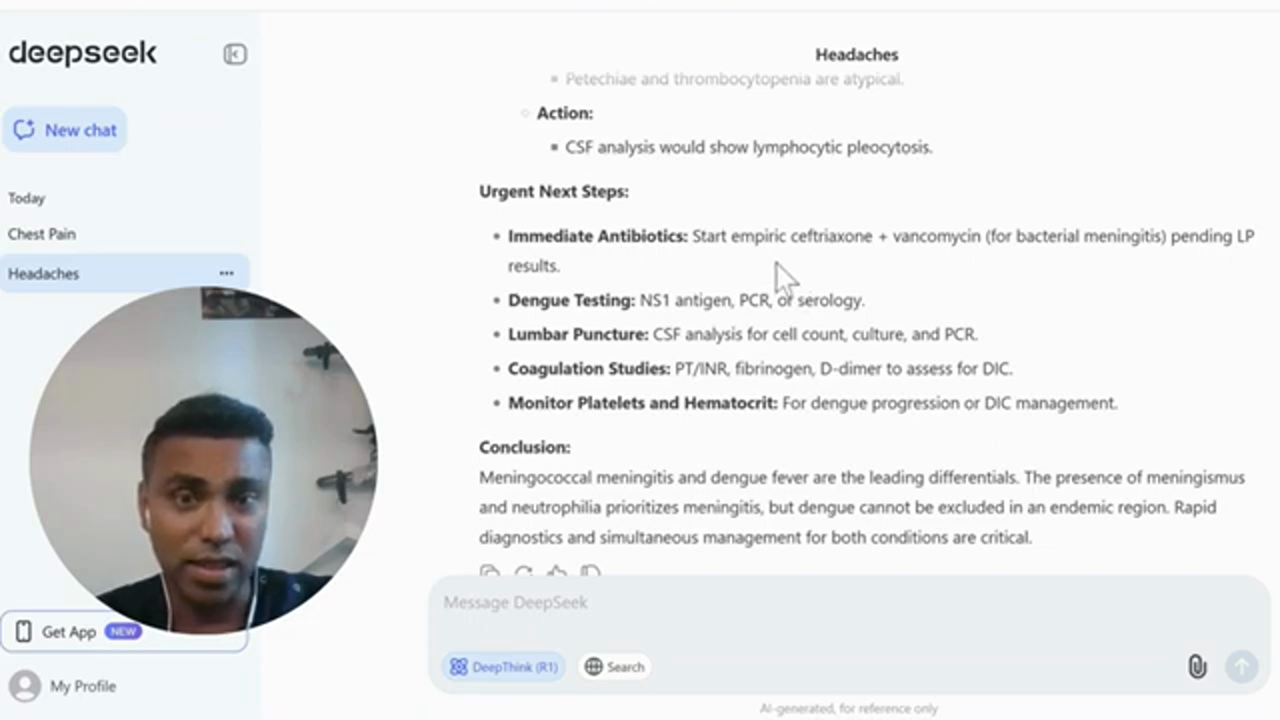 The rationale behind DeepSeek R1's diagnosis
One of the most impressive aspects of DeepSeek R1 is its ability to provide a clear and concise rationale behind its diagnosis. In the case of the 32-year-old male, the model carefully explained its thought process, considering each symptom and test result in detail. This level of transparency is essential in building trust between medical professionals and AI models.
The rationale behind DeepSeek R1's diagnosis
One of the most impressive aspects of DeepSeek R1 is its ability to provide a clear and concise rationale behind its diagnosis. In the case of the 32-year-old male, the model carefully explained its thought process, considering each symptom and test result in detail. This level of transparency is essential in building trust between medical professionals and AI models.
Case 2: A 41-Year-Old Male with Chest Pain
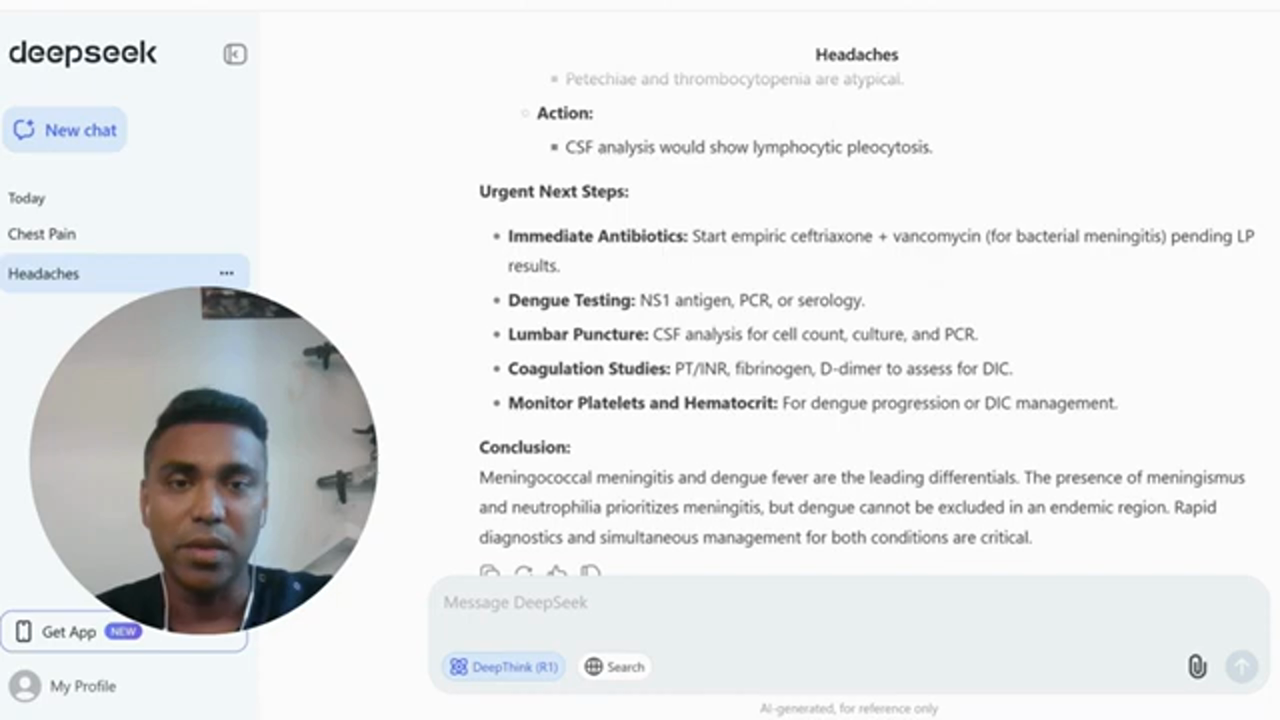 Case 2: A 41-year-old male with chest pain
The second case presented by Dr. Udara involves a 41-year-old male who had been experiencing chest pain while practicing karate. The patient had no prior medical history, and his vital signs were normal. DeepSeek R1 was tasked with analyzing the patient's symptoms and medical history to arrive at a diagnosis. The model carefully considered various differentials, including aortic dissection, pulmonary embolism, and pericarditis. After weighing the pros and cons of each possibility, the model concluded that aortic dissection was the most likely diagnosis.
Case 2: A 41-year-old male with chest pain
The second case presented by Dr. Udara involves a 41-year-old male who had been experiencing chest pain while practicing karate. The patient had no prior medical history, and his vital signs were normal. DeepSeek R1 was tasked with analyzing the patient's symptoms and medical history to arrive at a diagnosis. The model carefully considered various differentials, including aortic dissection, pulmonary embolism, and pericarditis. After weighing the pros and cons of each possibility, the model concluded that aortic dissection was the most likely diagnosis.
The Importance of Transparency in AI-Driven Decision-Making
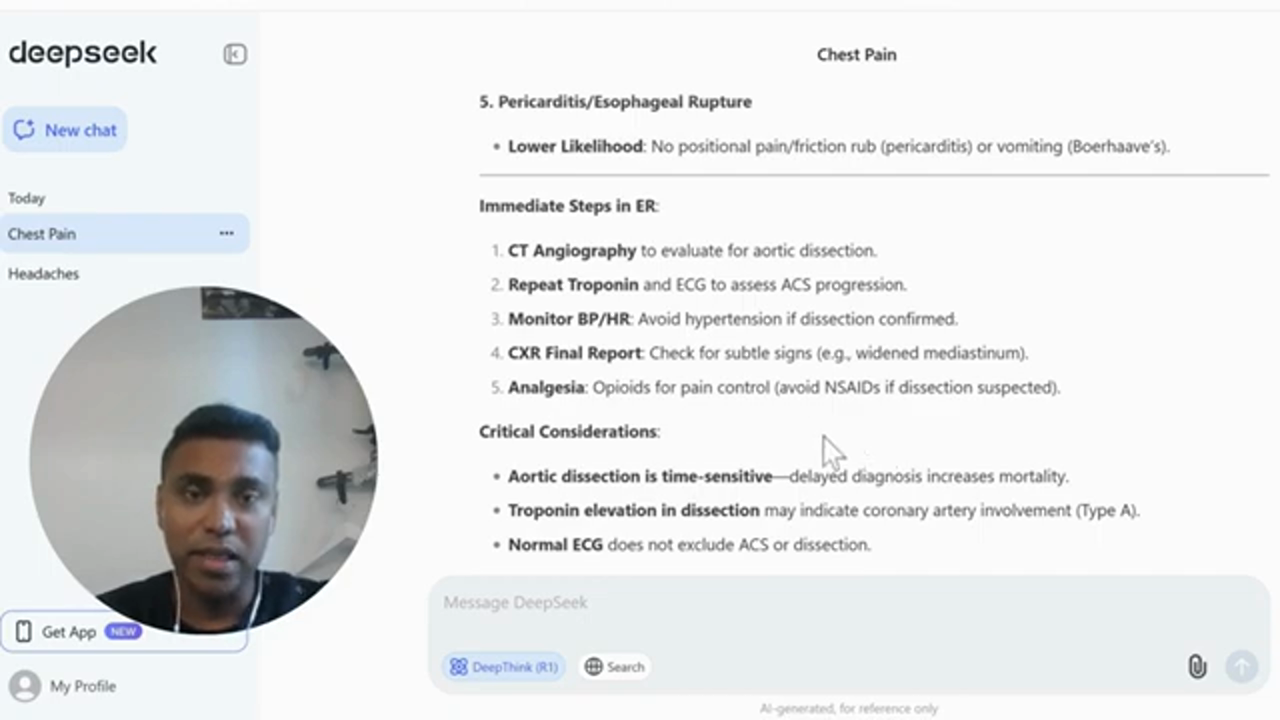 The importance of transparency in AI-driven decision-making
The ability of DeepSeek R1 to provide a clear and concise rationale behind its diagnosis is a significant advantage over other AI models. This level of transparency is essential in building trust between medical professionals and AI models, as it allows clinicians to understand the thought process behind the diagnosis.
The importance of transparency in AI-driven decision-making
The ability of DeepSeek R1 to provide a clear and concise rationale behind its diagnosis is a significant advantage over other AI models. This level of transparency is essential in building trust between medical professionals and AI models, as it allows clinicians to understand the thought process behind the diagnosis.
Conclusion: The Future of Medical Reasoning with DeepSeek R1
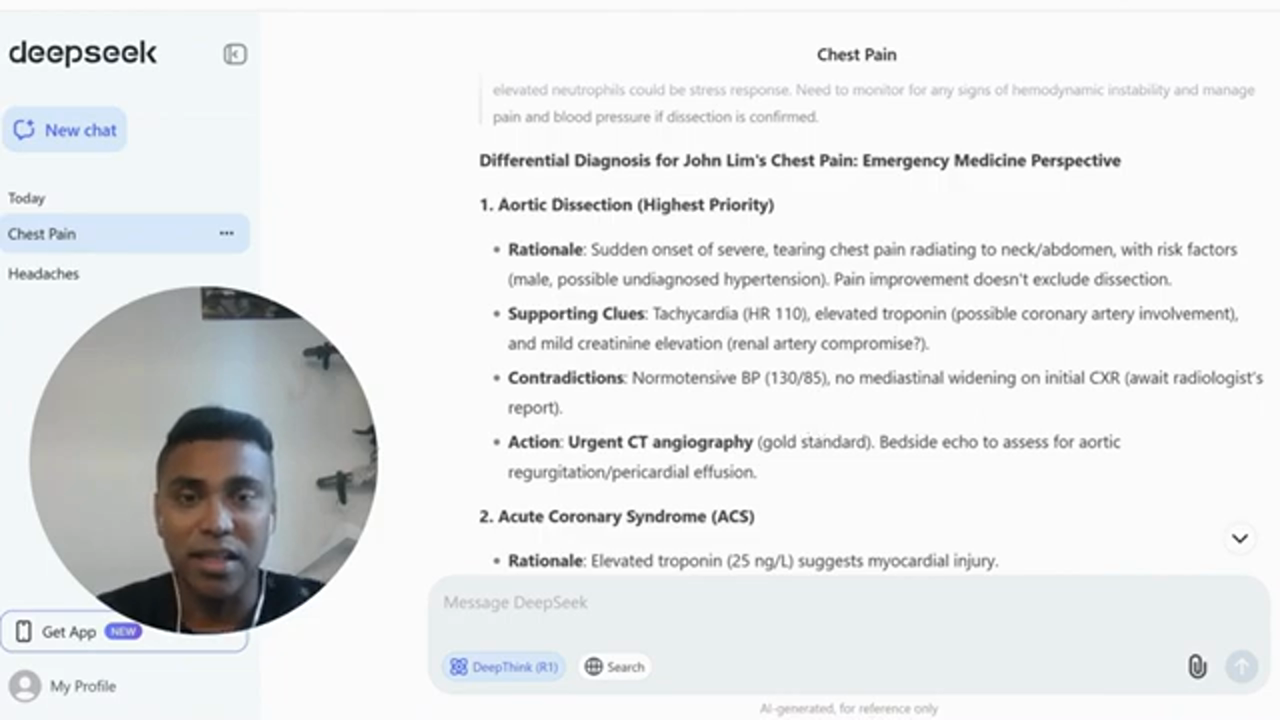 Conclusion: The future of medical reasoning with DeepSeek R1
In conclusion, DeepSeek R1 has shown exceptional performance in medical reasoning, outperforming even the most skilled junior residents. Its ability to analyze complex medical data, identify patterns, and provide accurate diagnoses has been praised by medical professionals. The model's transparency and ability to provide a clear and concise rationale behind its diagnosis are significant advantages over other AI models. As the field of AI continues to evolve, it is likely that DeepSeek R1 will play a major role in shaping the future of medical reasoning.
Conclusion: The future of medical reasoning with DeepSeek R1
In conclusion, DeepSeek R1 has shown exceptional performance in medical reasoning, outperforming even the most skilled junior residents. Its ability to analyze complex medical data, identify patterns, and provide accurate diagnoses has been praised by medical professionals. The model's transparency and ability to provide a clear and concise rationale behind its diagnosis are significant advantages over other AI models. As the field of AI continues to evolve, it is likely that DeepSeek R1 will play a major role in shaping the future of medical reasoning.
